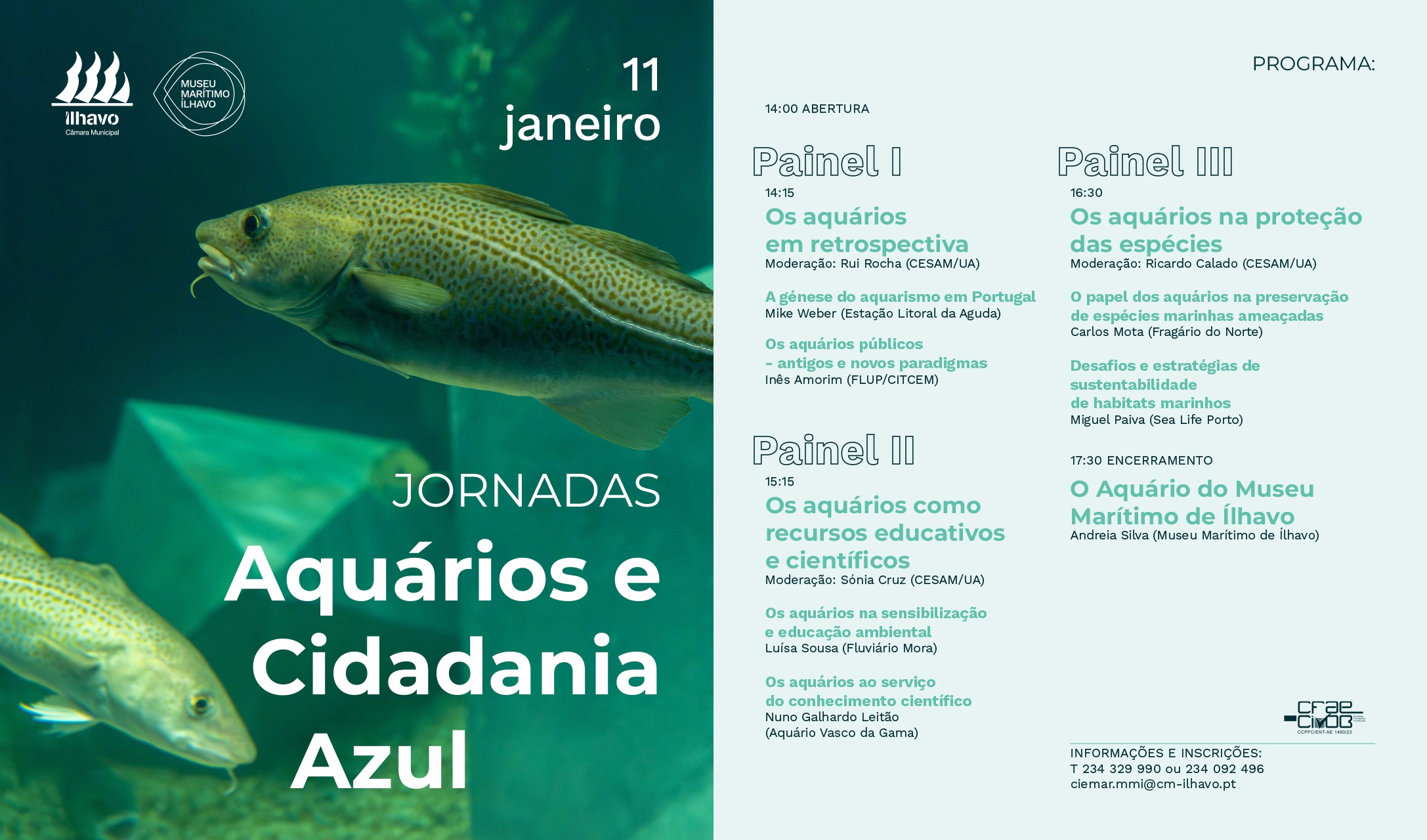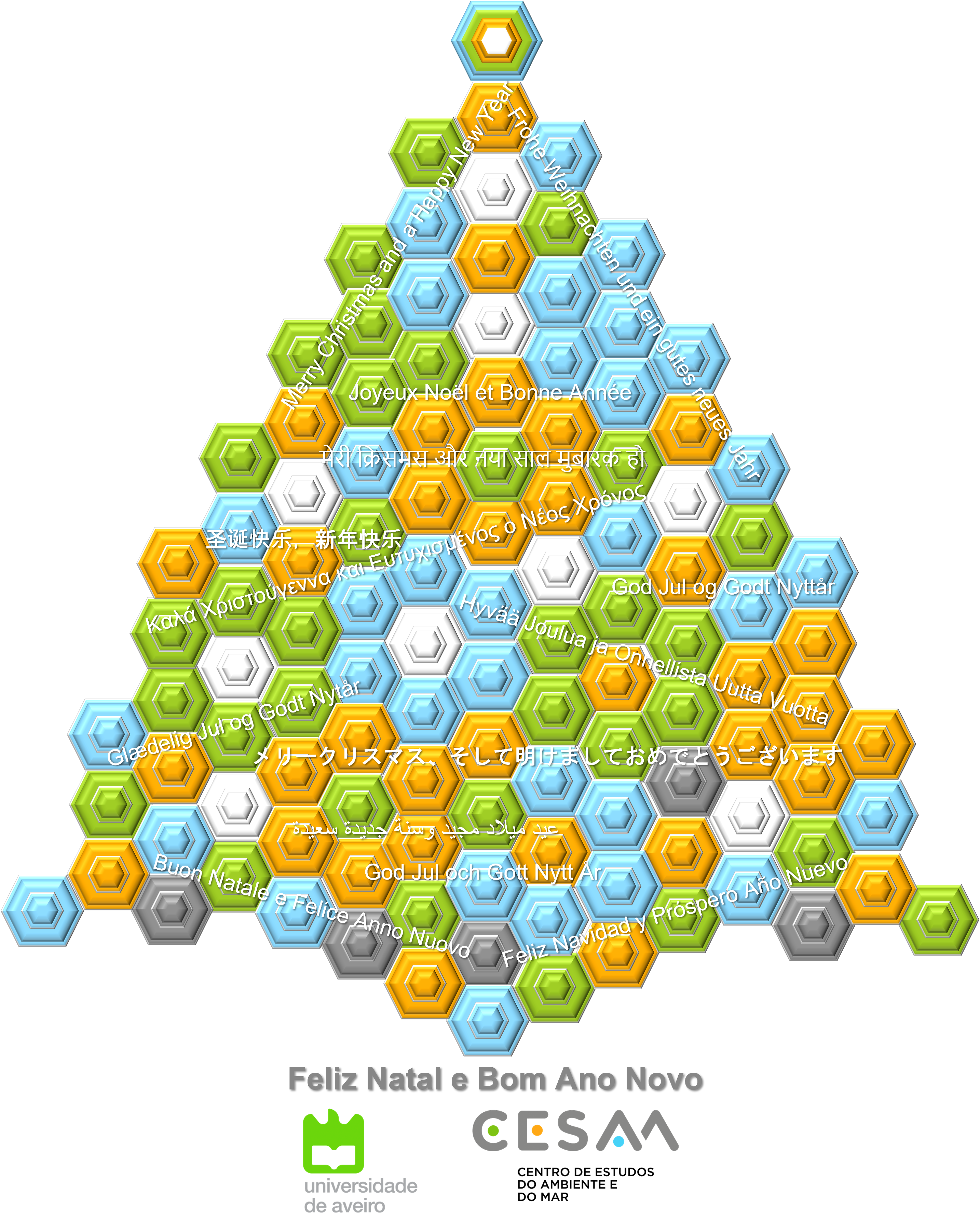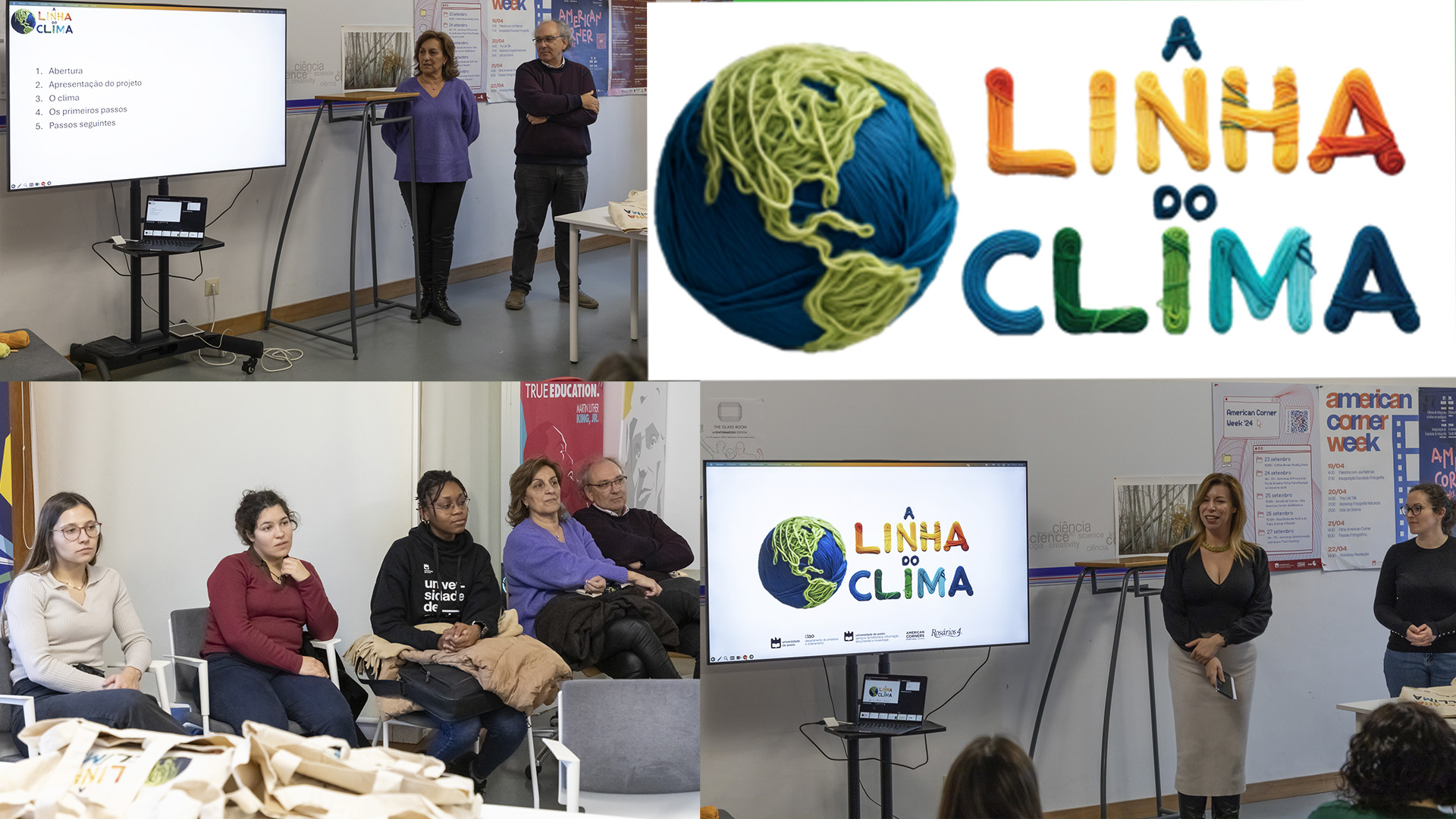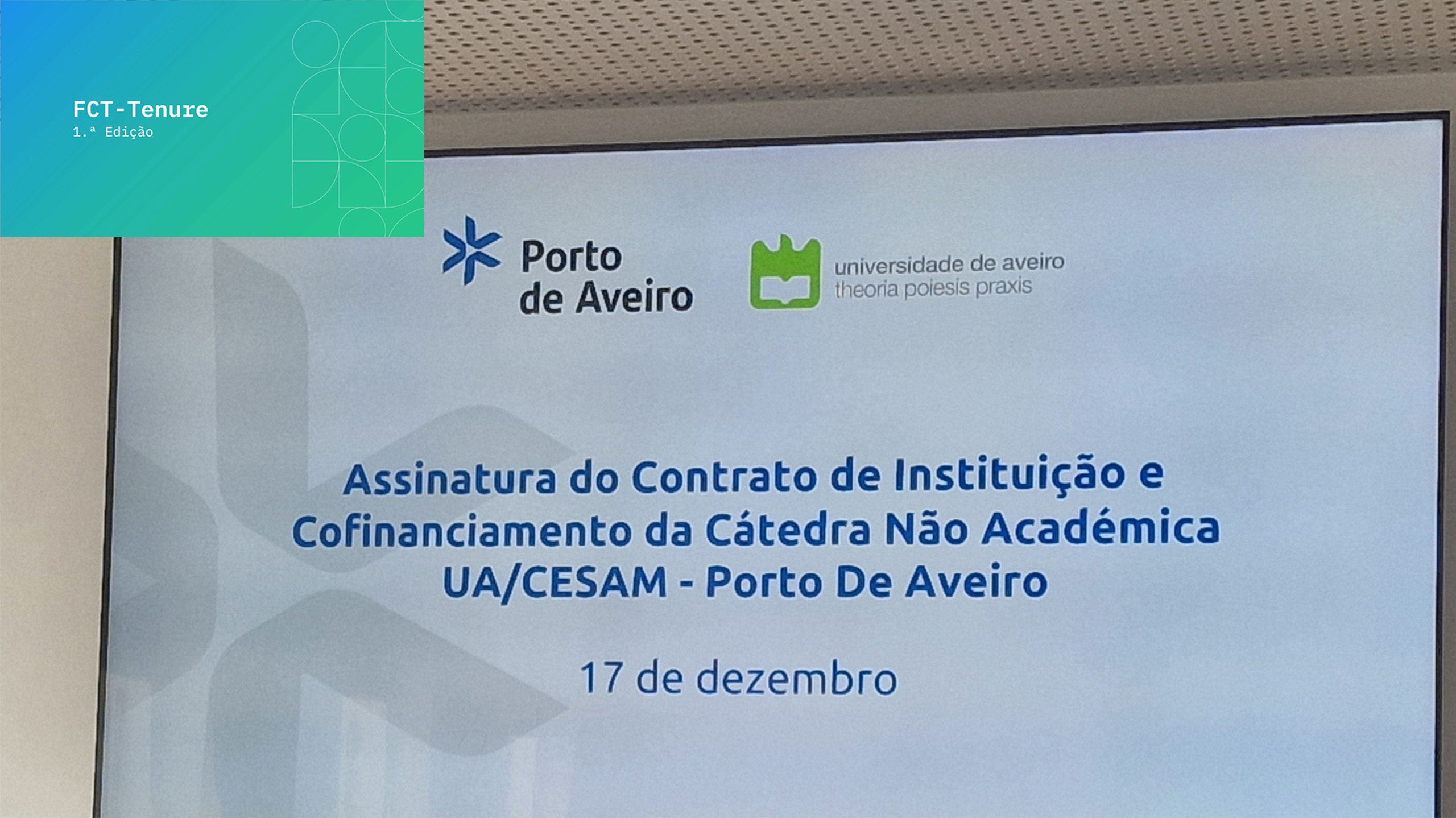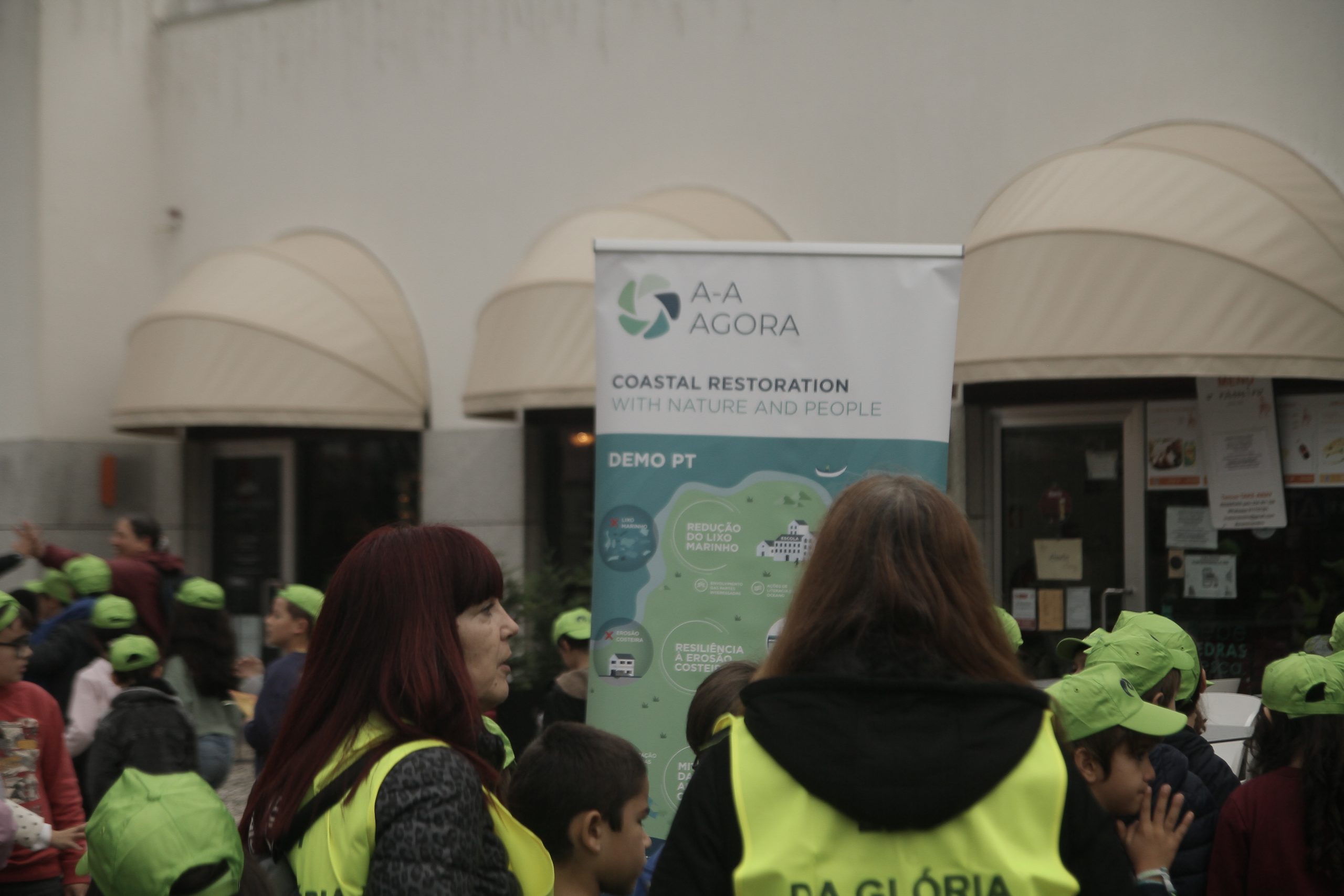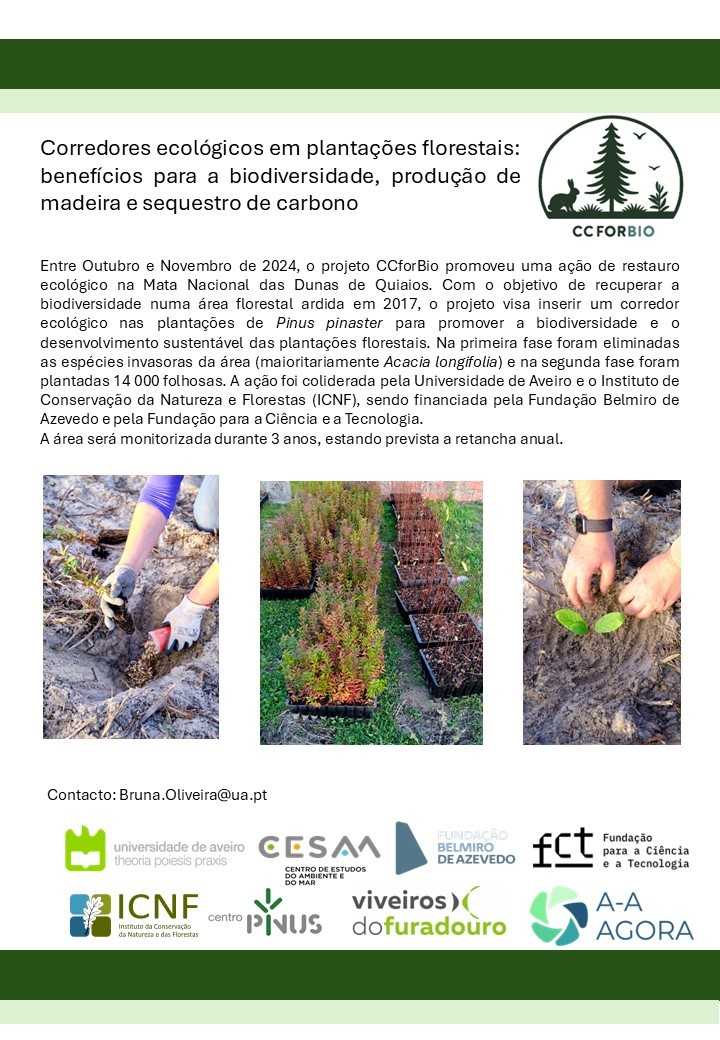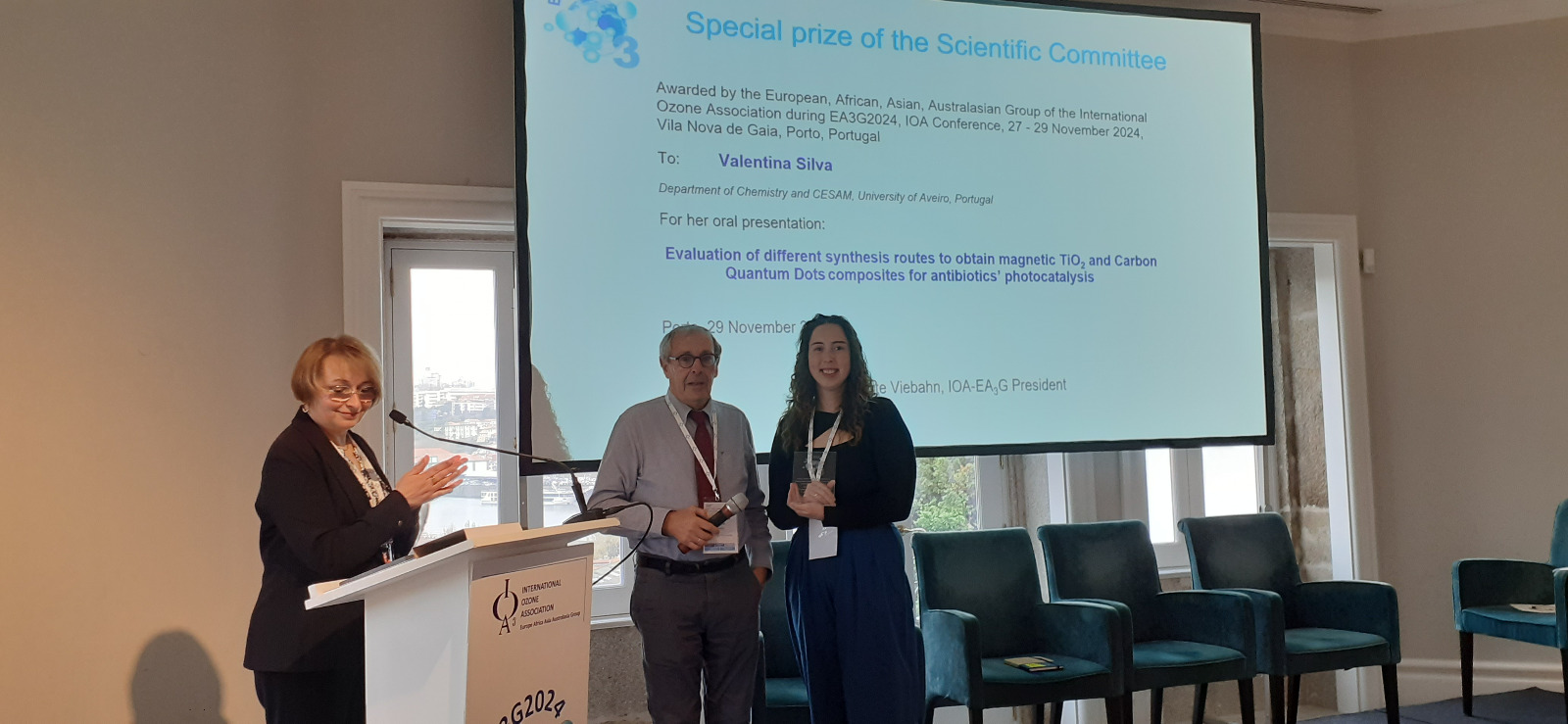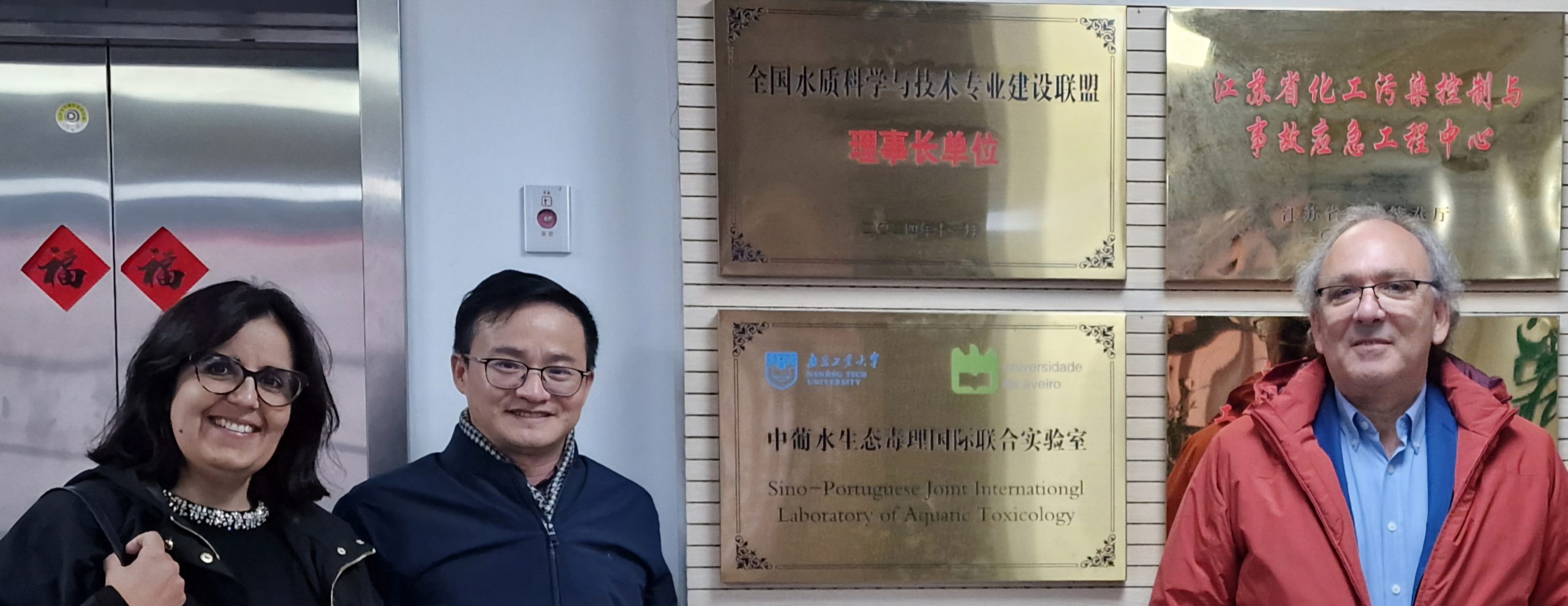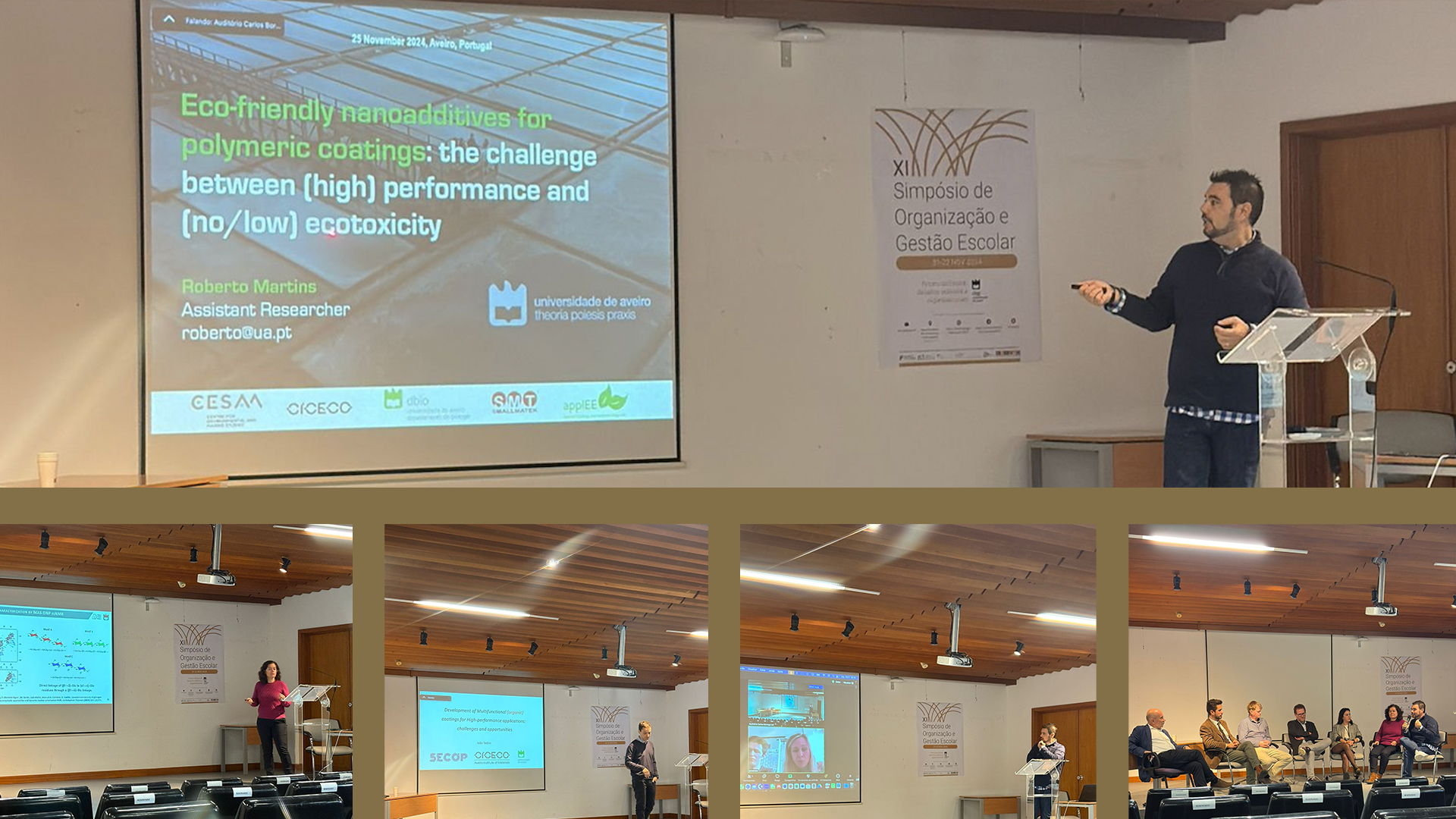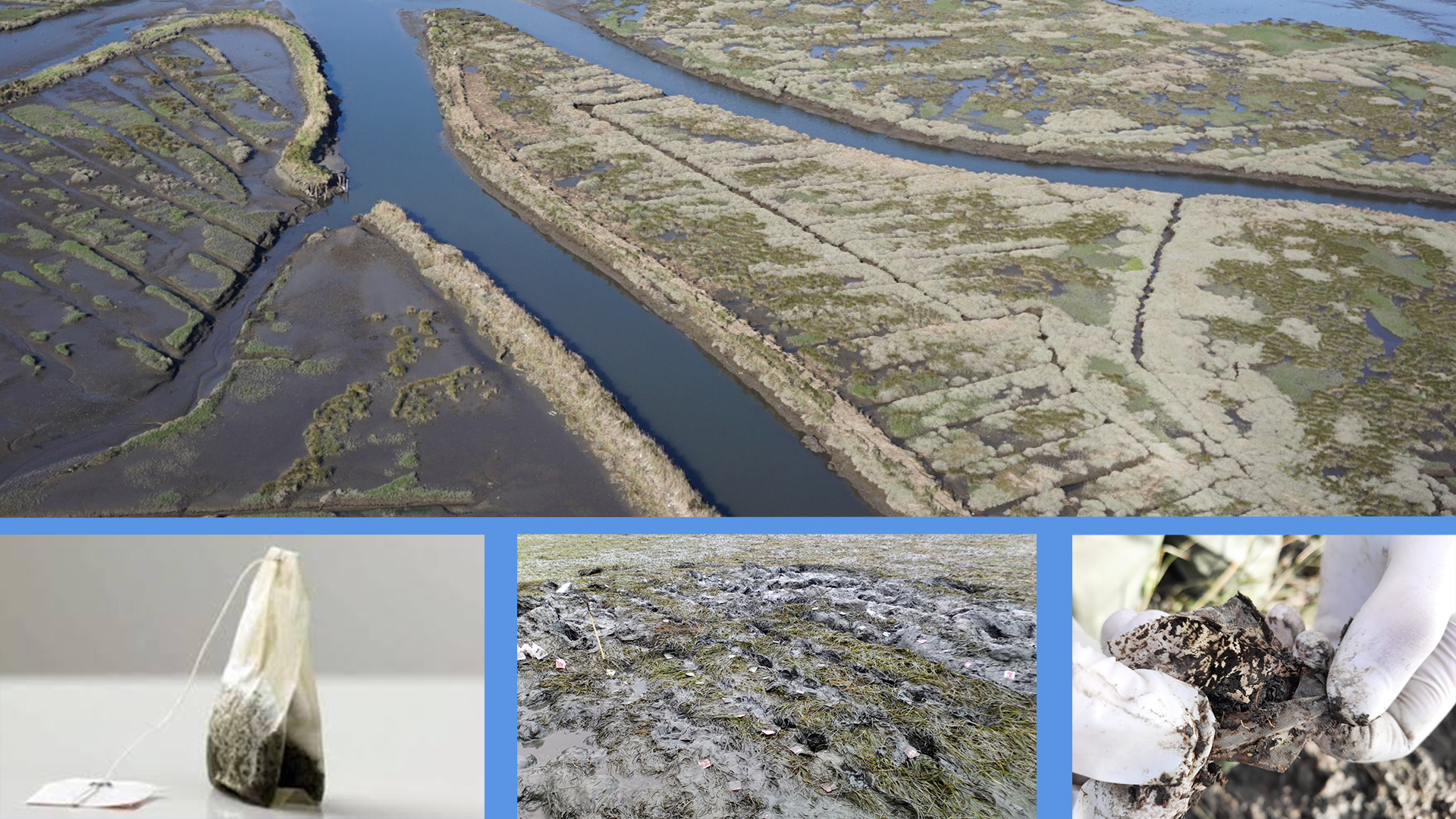On November 25th, researchers from CESAM, CICECO and LAQV-REQUIMTE met under the motto “When Chemistry meets Biology: (Eco)toxicity of Biodegradable Polymers and Nanomaterials”. The universities of Lisbon and Pardubice (Czech Republic) and the Portuguese company Smallmatek Lda. were also present to discuss and collaborate in the field of biodegradable polymers and nanomaterials for different applications.
The initiative aimed to bring together experts from the areas of chemistry, materials engineering, biochemistry, bioengineering and biology and industry to discuss and develop biodegradable, low (eco)toxicity multifunctional polymeric coatings, with emphasis on the intersection between chemical structure and biological function and the environmental and human health impact.
Roberto Martins, Researcher at CESAM and DBio, presented the latest discoveries on environmentally friendly nano-additives for polymeric coatings, as well as a brief overview of upcoming projects focused on the sustainable and safe development by design of new materials and polymers. Fernanda Rosário, researcher at CESAM and DBio, explored the combined effects of polyethylene nanoplastics and mercury on the viability and migration capacity of human cell lines.
João Tedim (CICECO) highlights that societal challenges are complex and involve the need to develop new materials for different uses and research in different areas. The scientist highlights that “from the moment we develop materials that are supposed to have great durability and make metals and substrates used in infrastructures, the environmental challenge is that materials with high toxicity do not persist in the environment. There is a need to think about materials with high performance in terms of service and life, but in ways that can be recycled, reused or recovered. From the moment we have to develop environmentally friendly technologies… this competence is within CESAM and, therefore, we have to carry out this assessment. It is not a forced search, but a natural development of these problems”.
Organized by Maria Pavlaki (CESAM/DBio), Manuel Coimbra (LAQV-REQUIMTE DQ) and Roberto Martins (CESAM/DBio), the workshop took place within the scope of the Horizon MSCA SAFERCOAT project and the visit of professor Tomas Rousar, from the University from Pardubice in the Czech Republic.
The workshop organization highlights the project’s main outputs:
• Identification of technical-scientific challenges for applications such as high-performance coatings, customized treatment of diseases, controlled drug release systems, or other molecules that are simultaneously safe for the environment and for humans.
• Advocating a trans- and multidisciplinary approach in the initial stages to understand the relationship between chemical structure, performance and environmental and public health impacts.
• Assessment of the (eco)toxicological effects of products developed by universities and companies to ensure environmental safety and human health, before entering the market.
• Reinforcement of instruments for financing more applied scientific activities with high added value, but also fundamental science
• Identification of challenges and opportunities in transferring knowledge to the industry, with emphasis on the importance of effective and clear communication about the danger of products to the general public.
